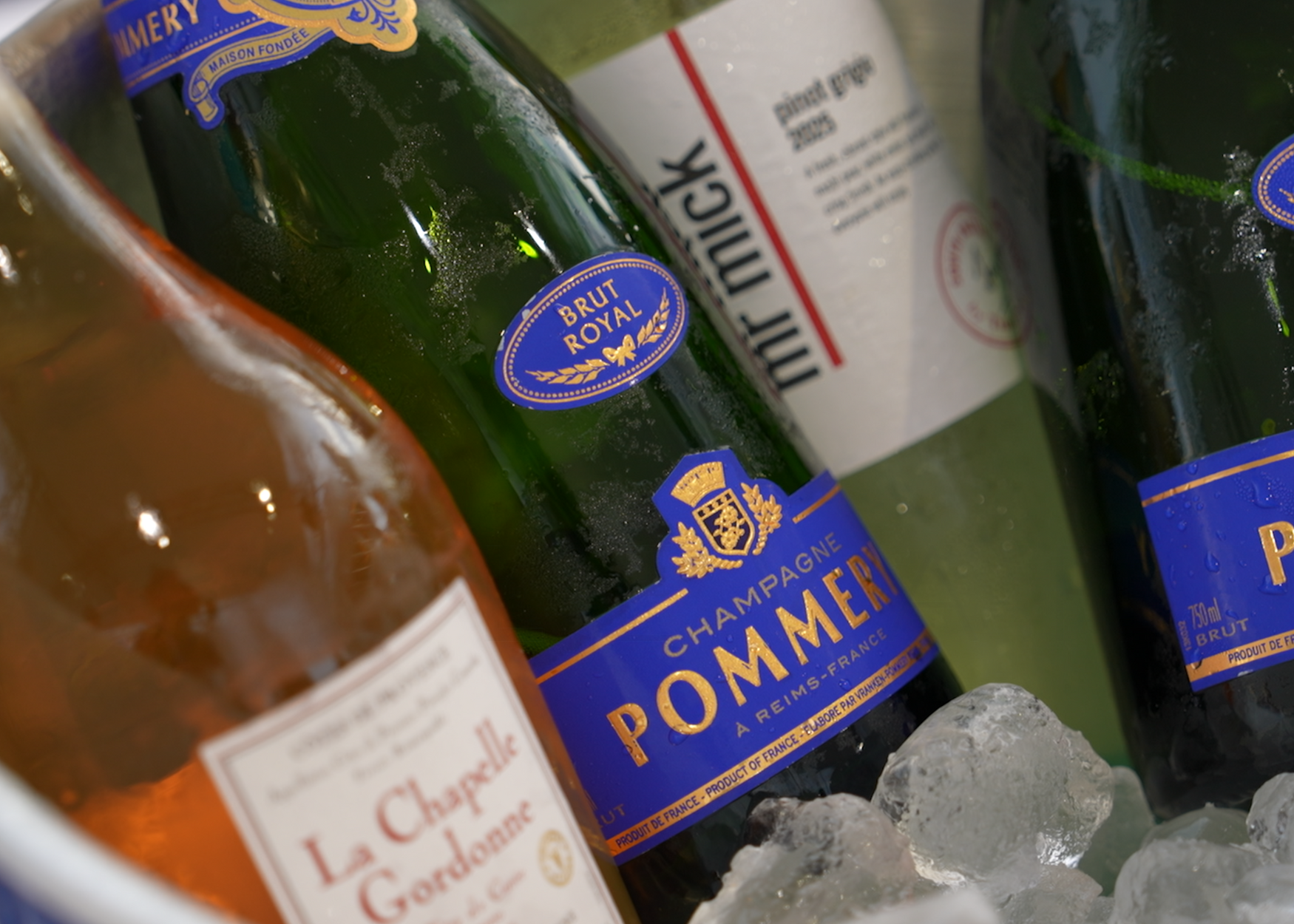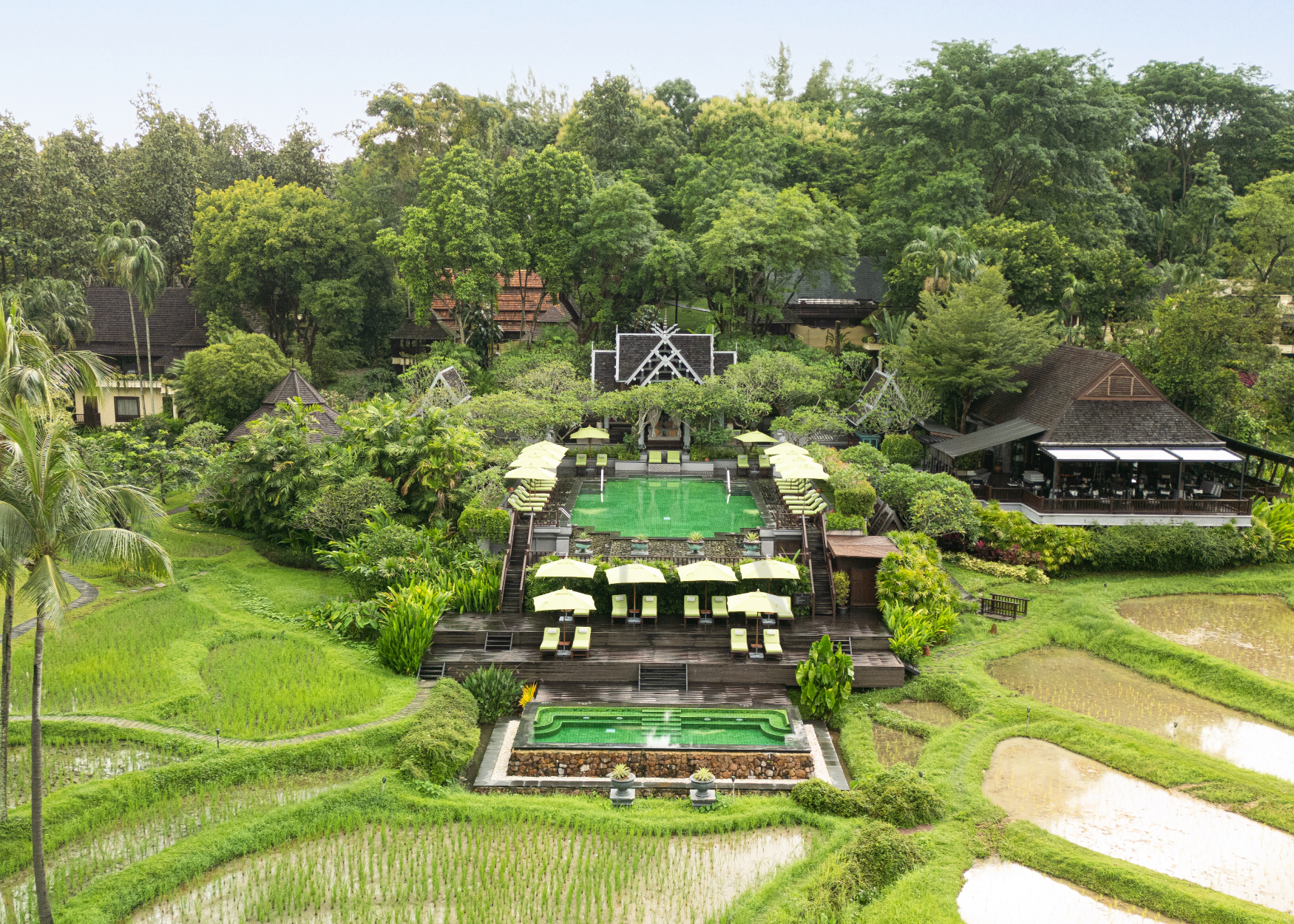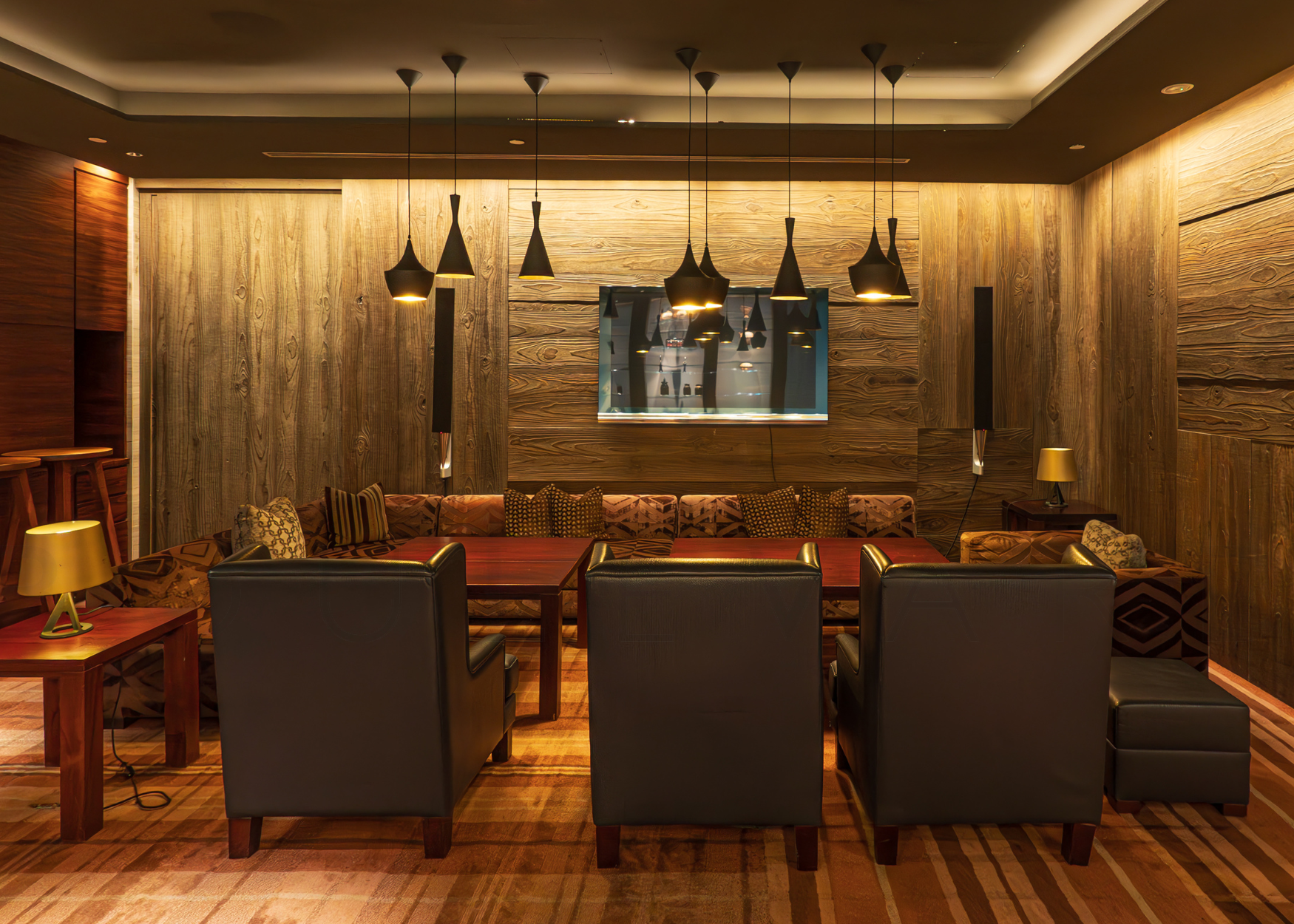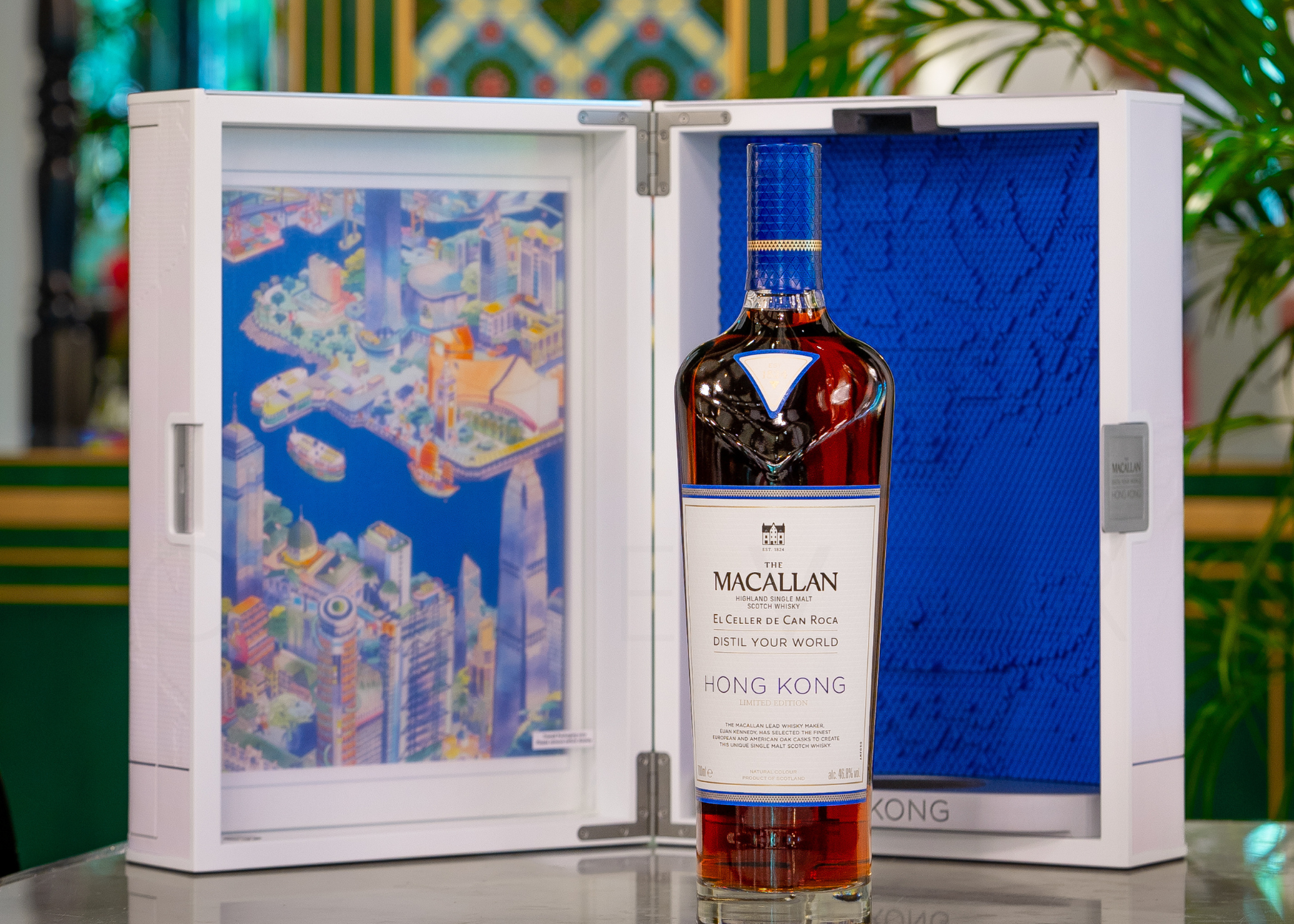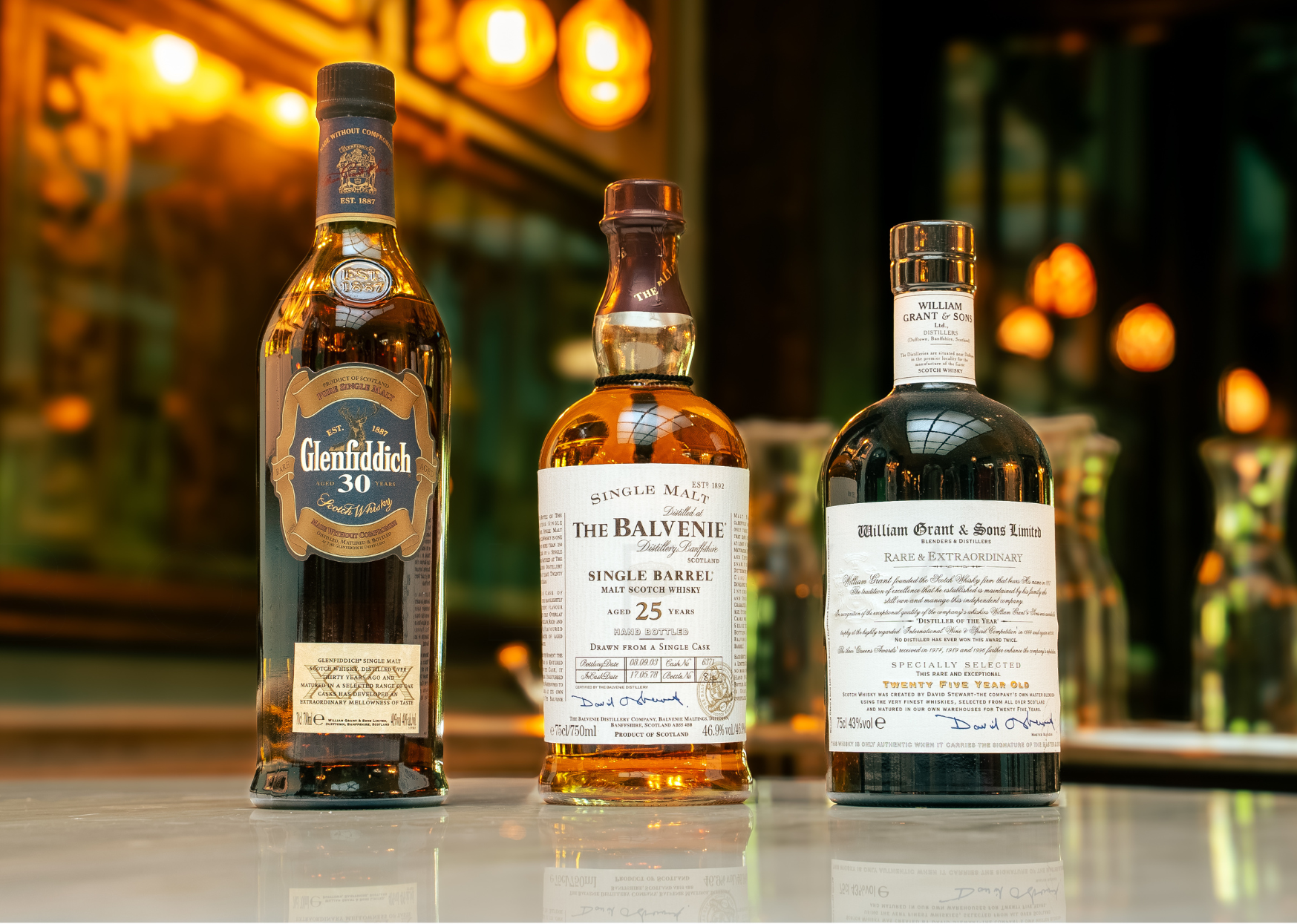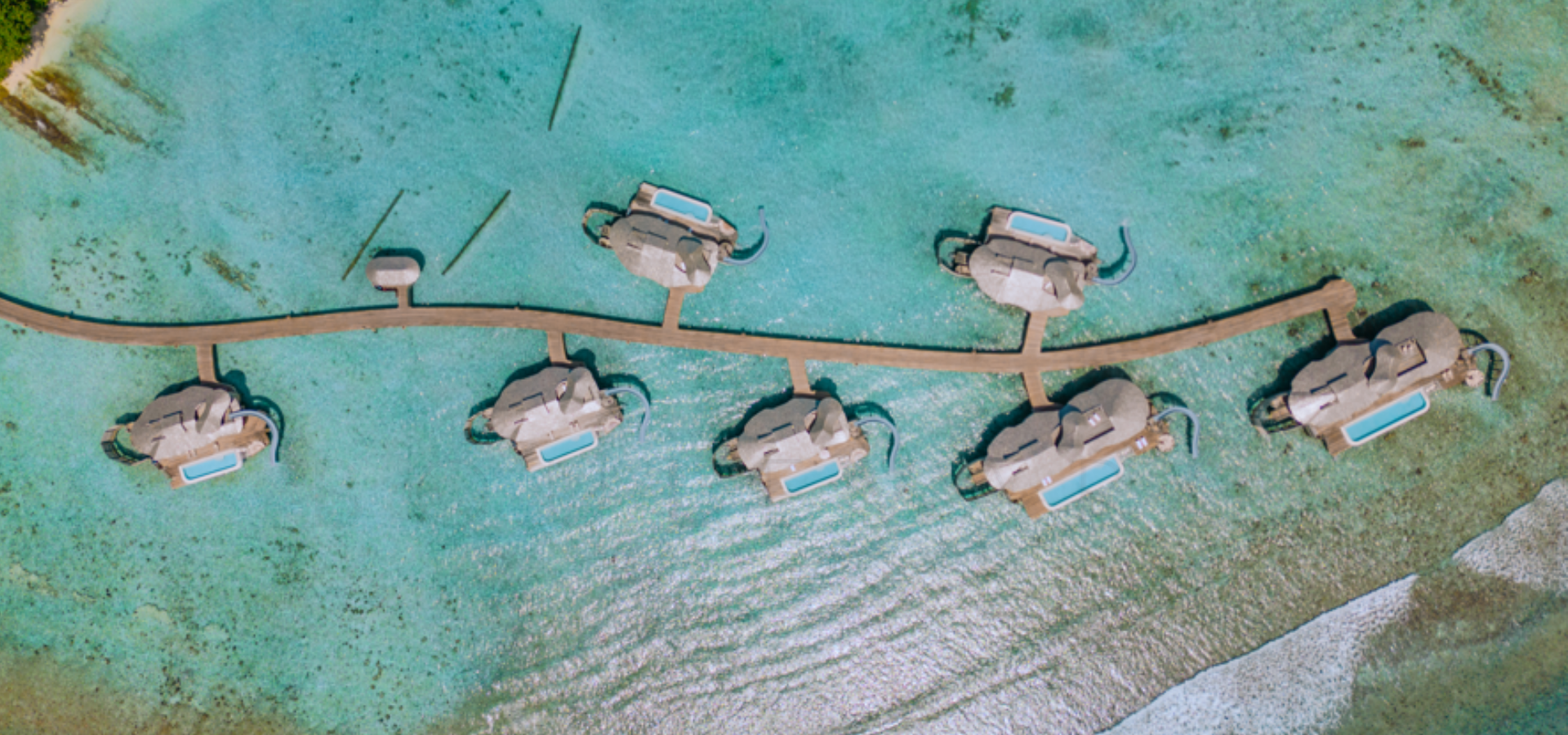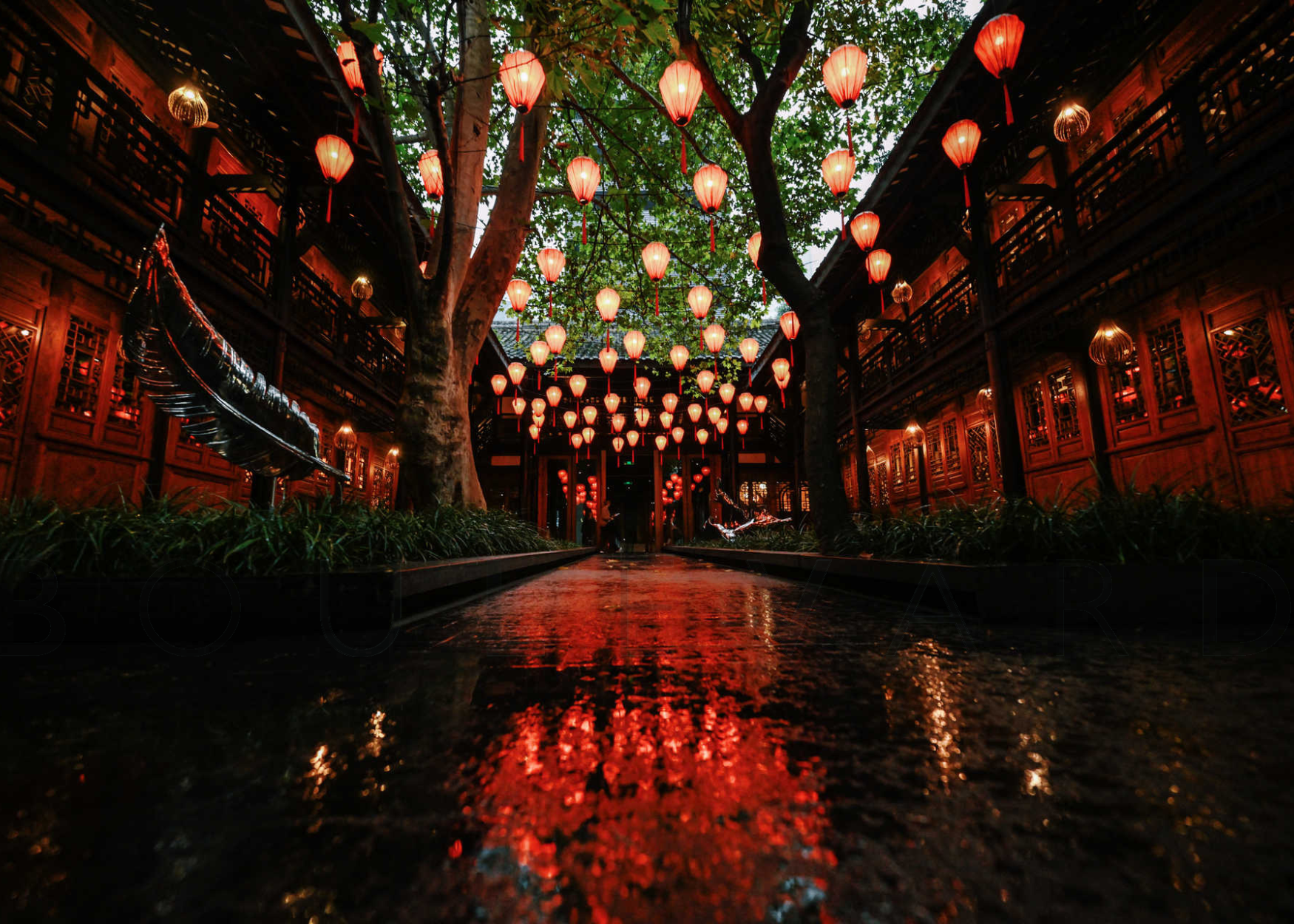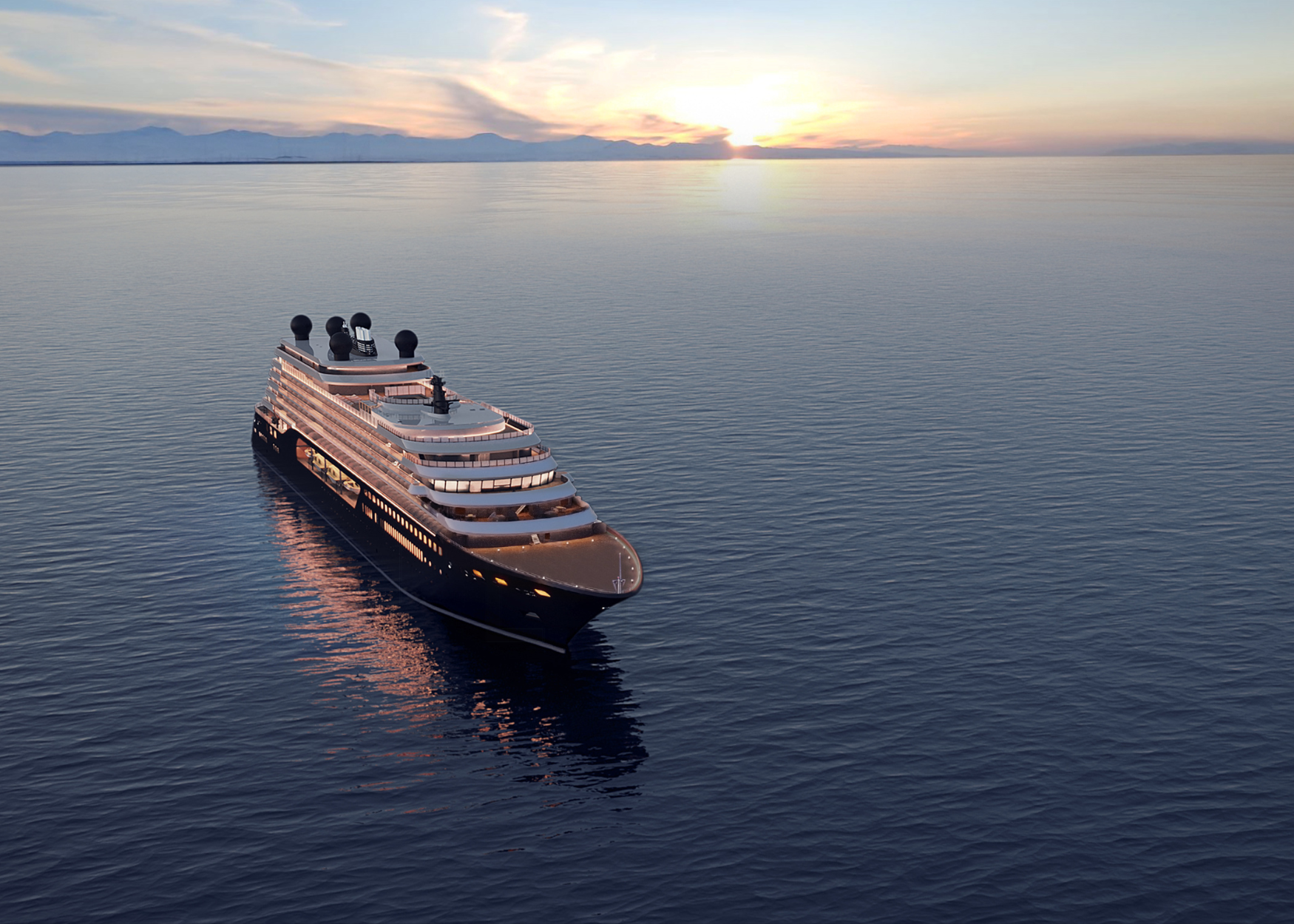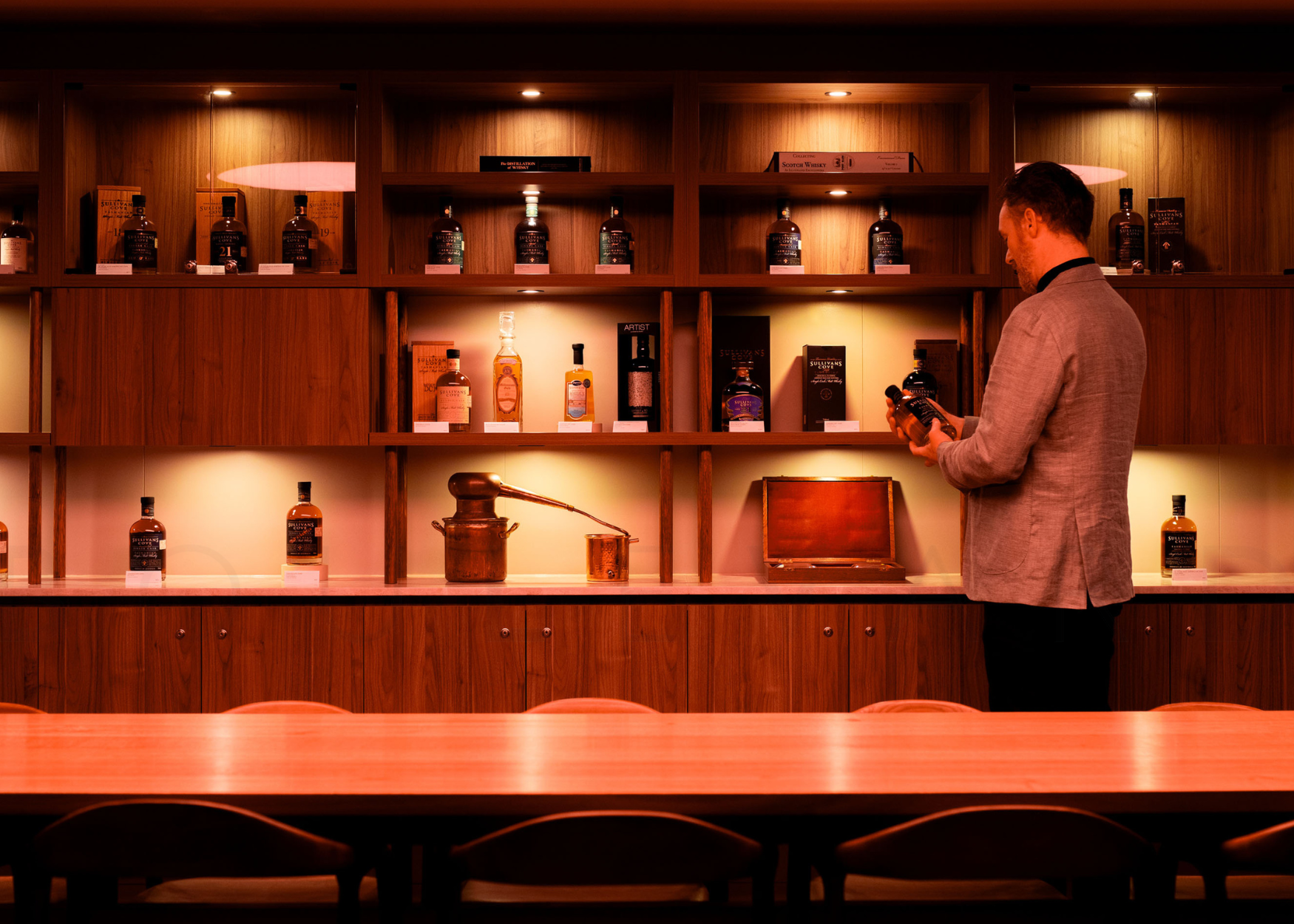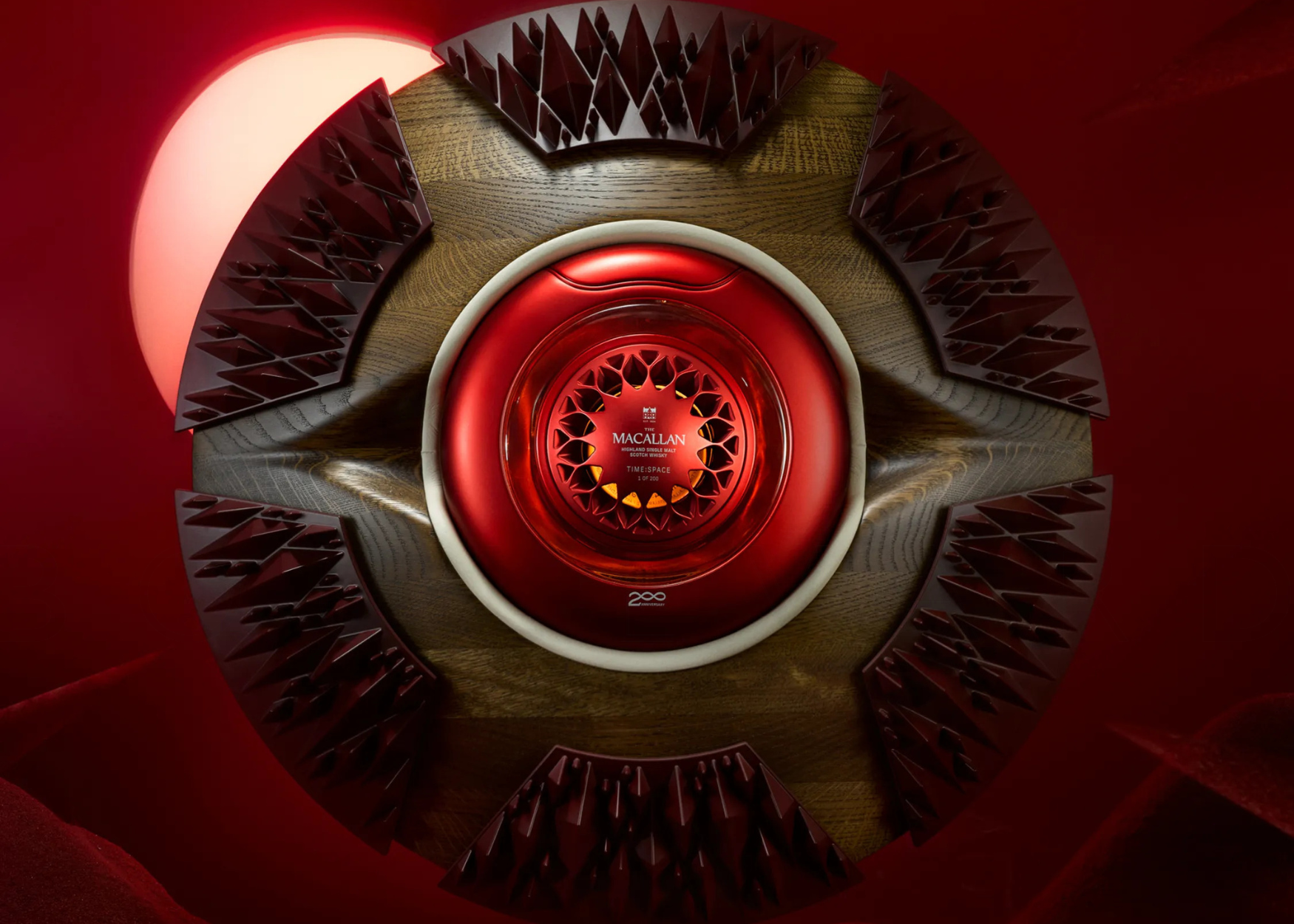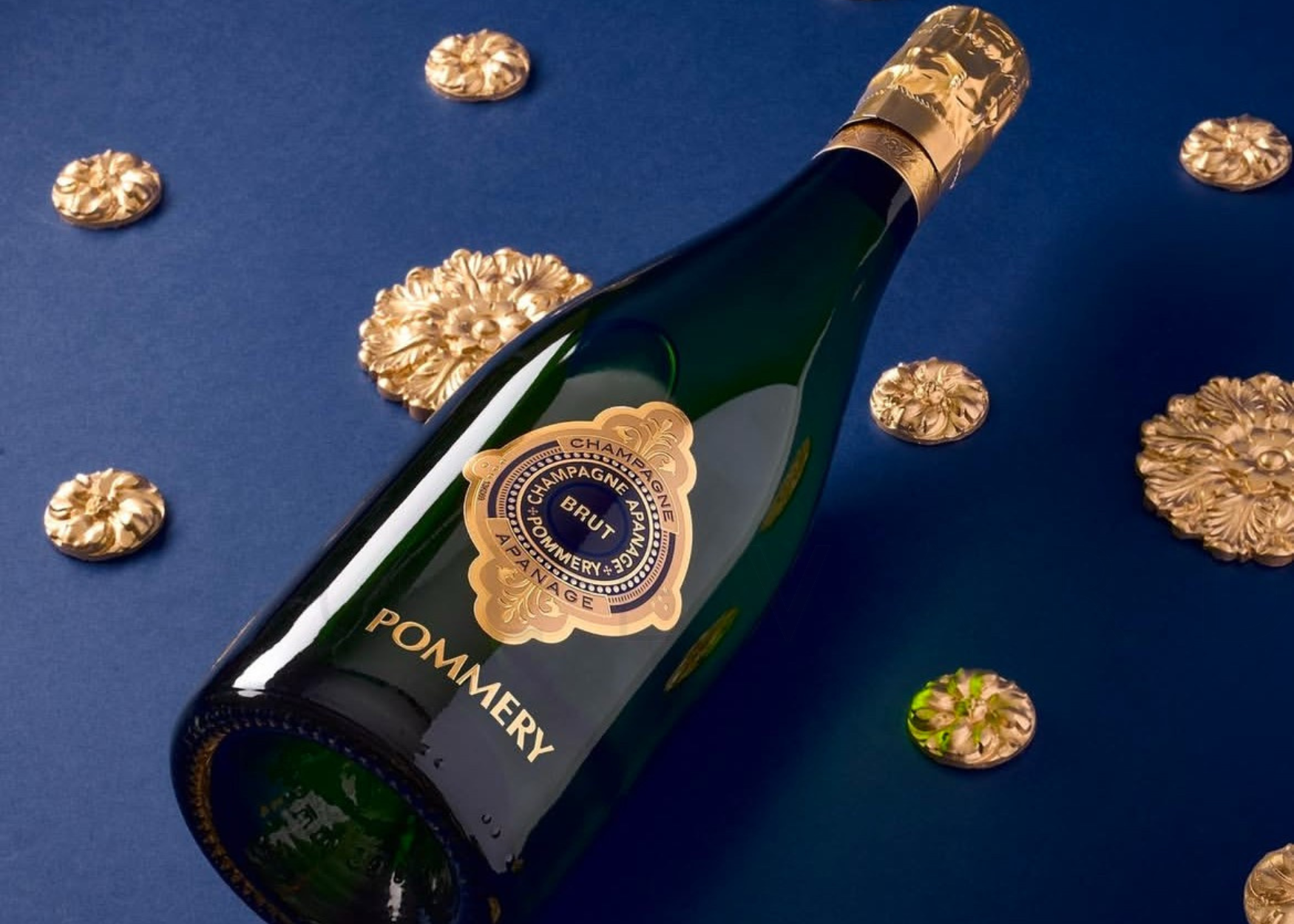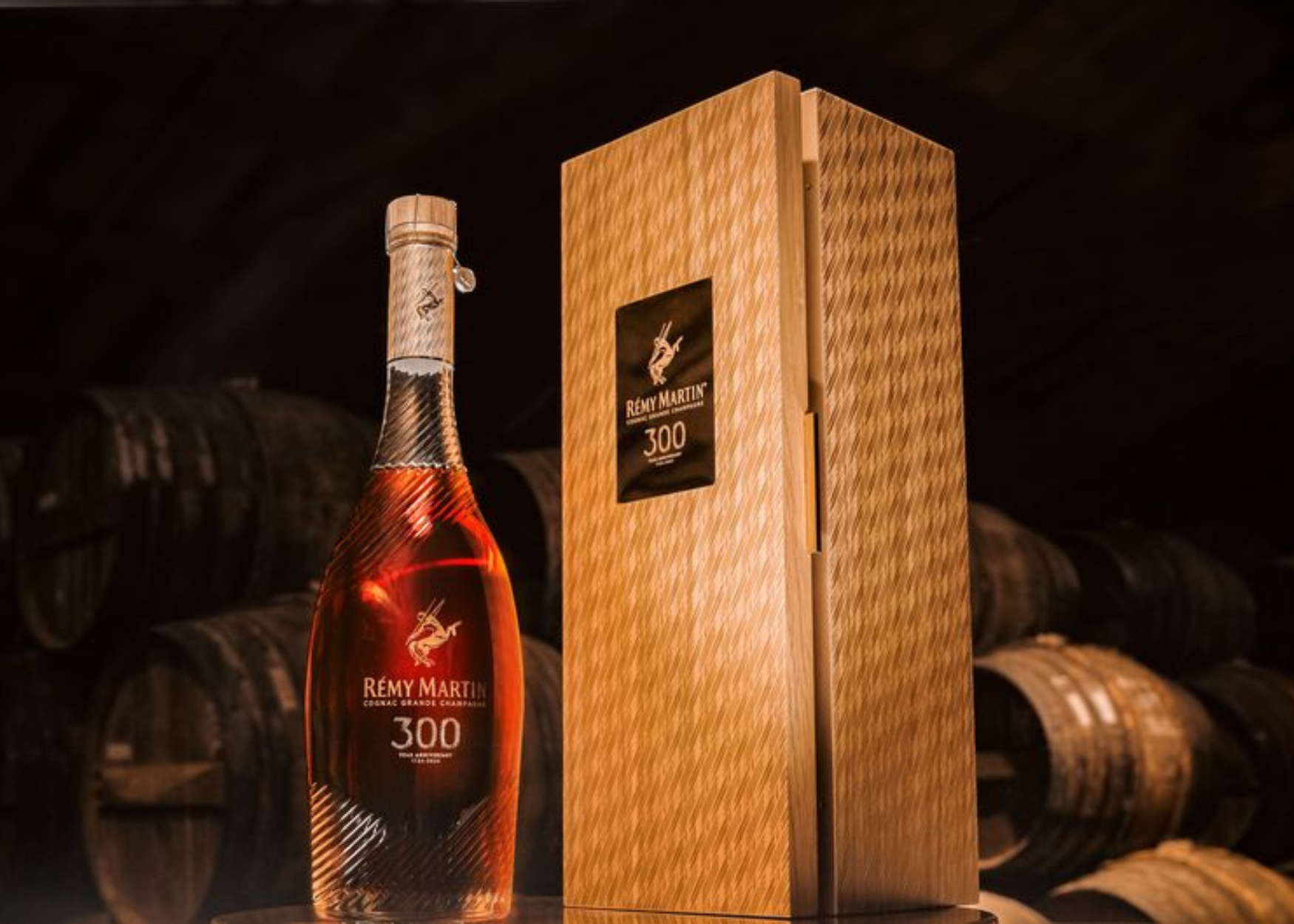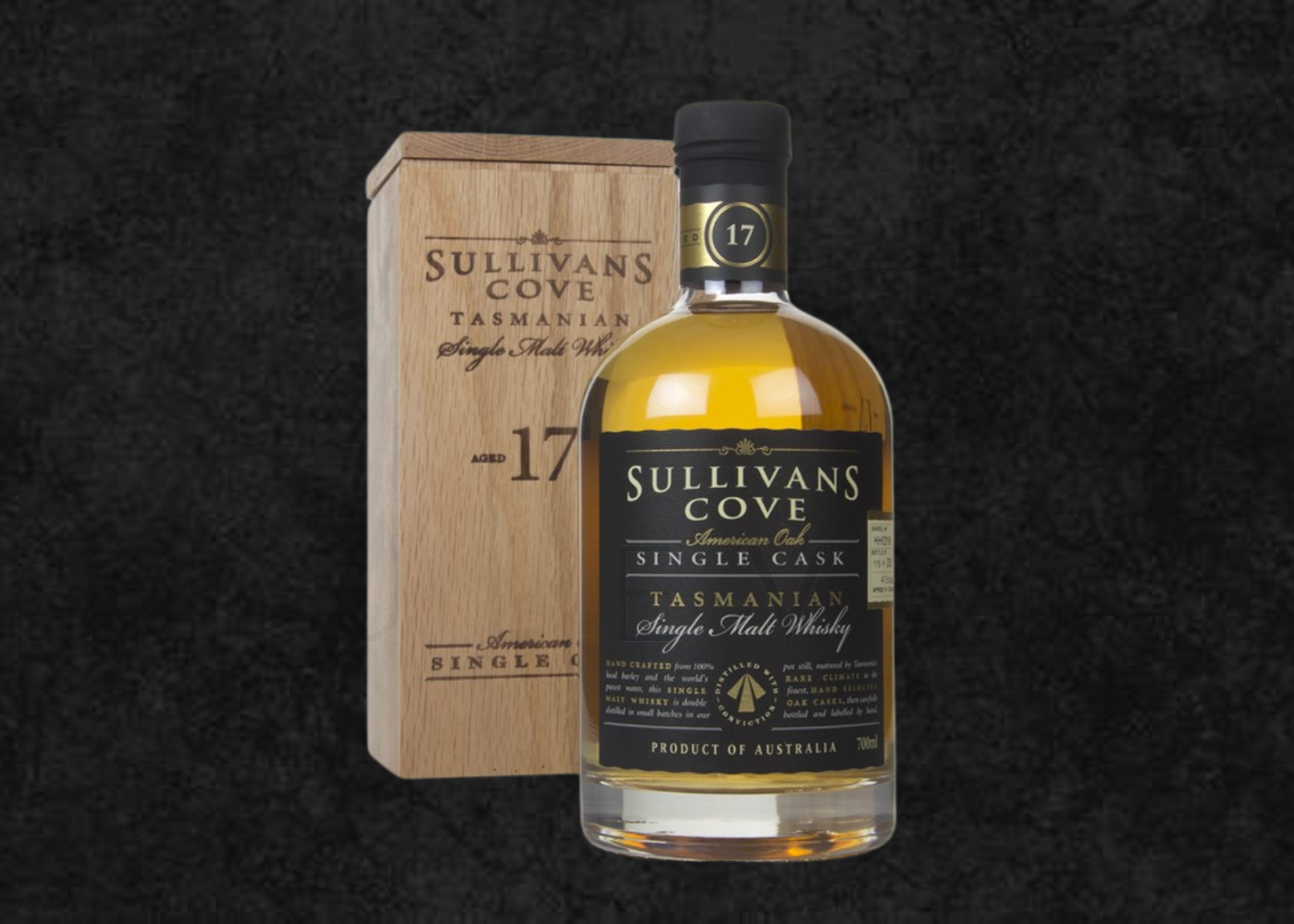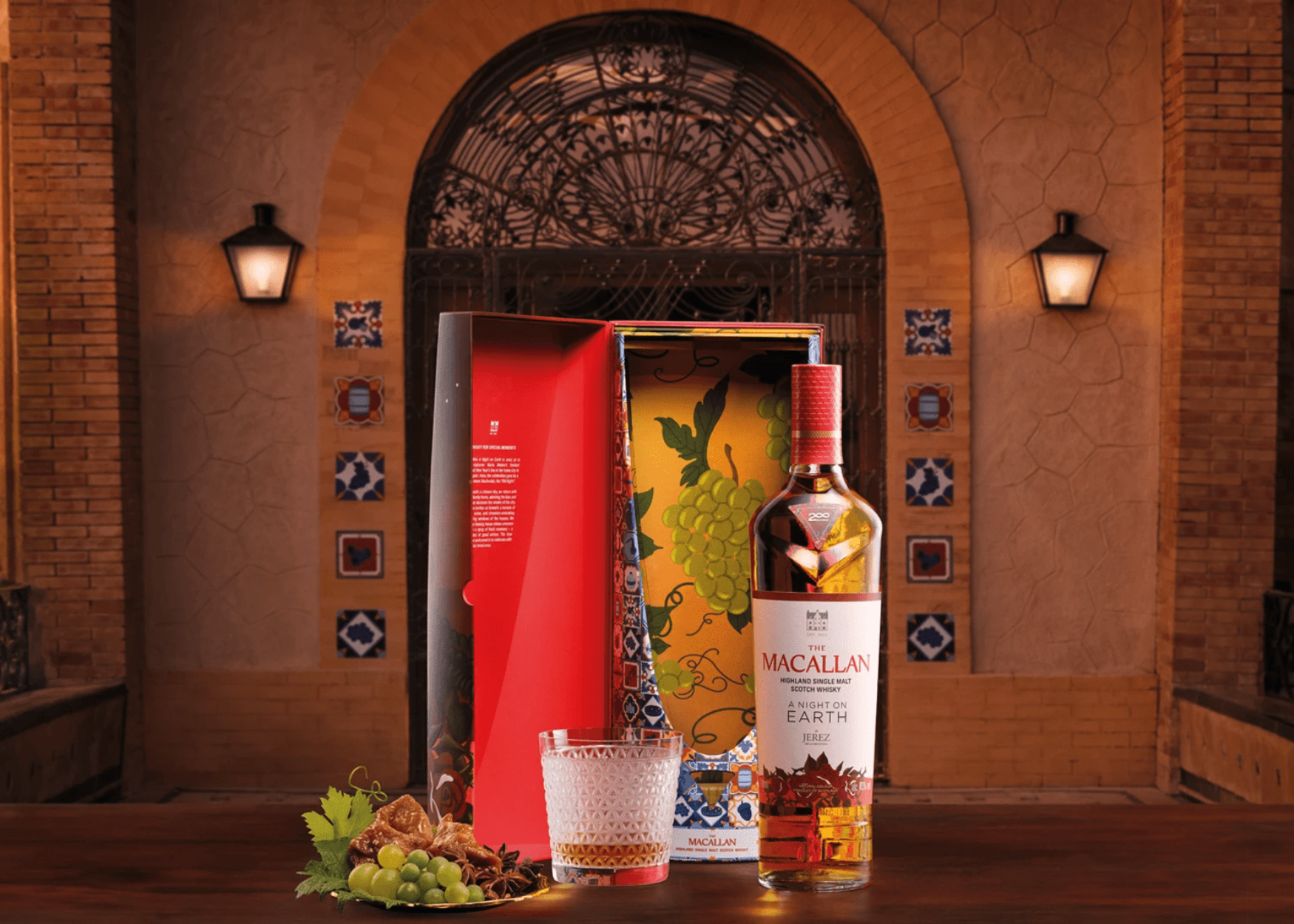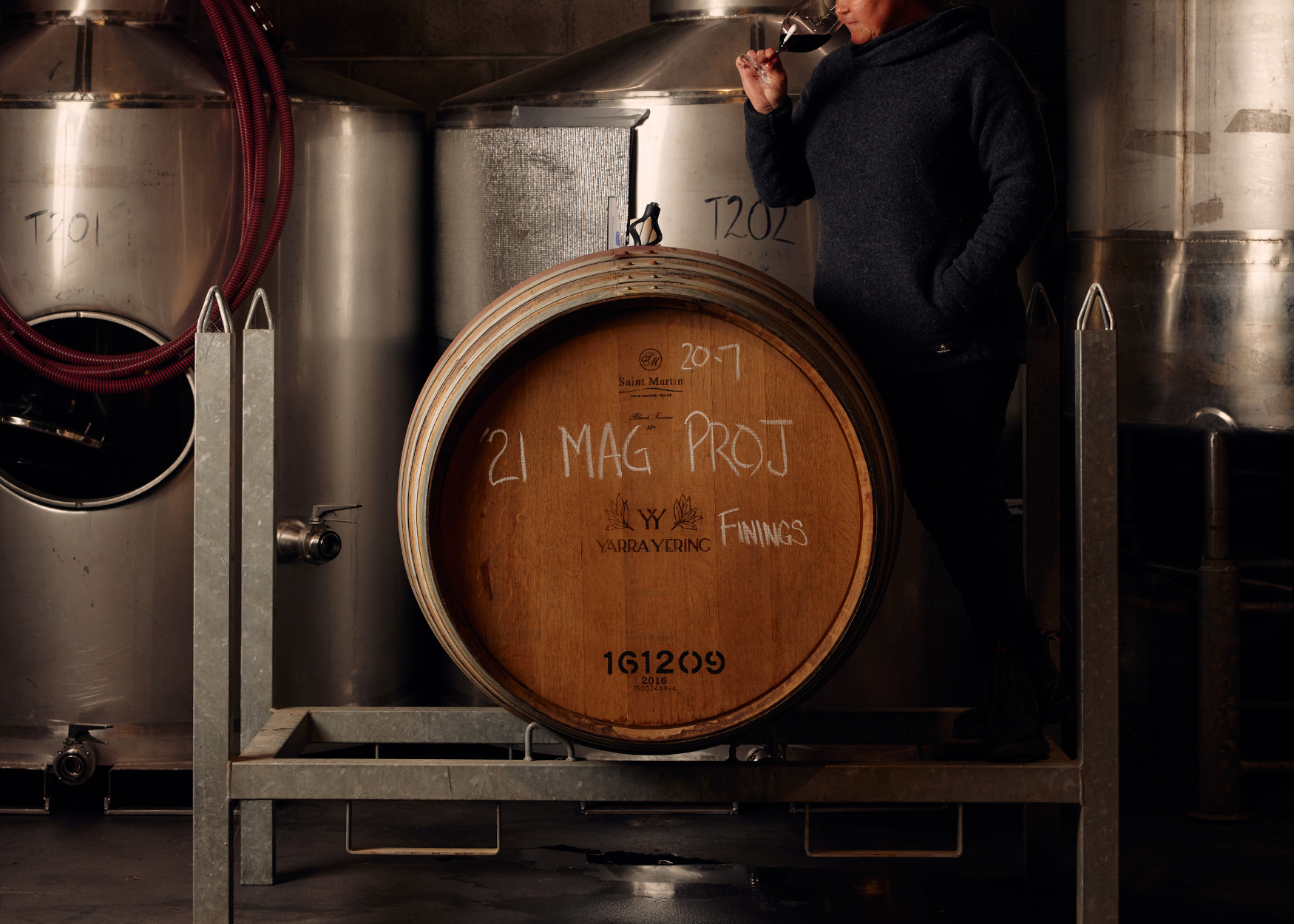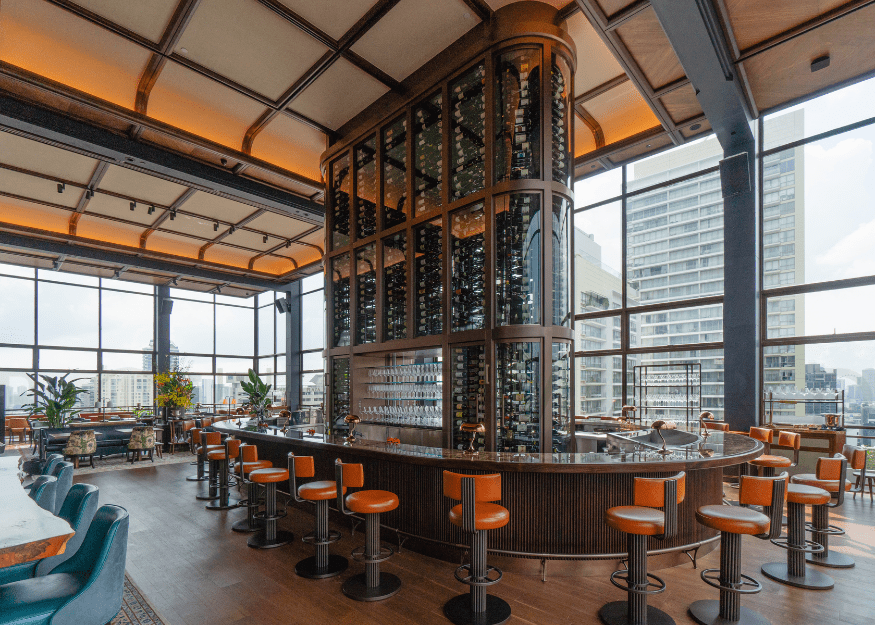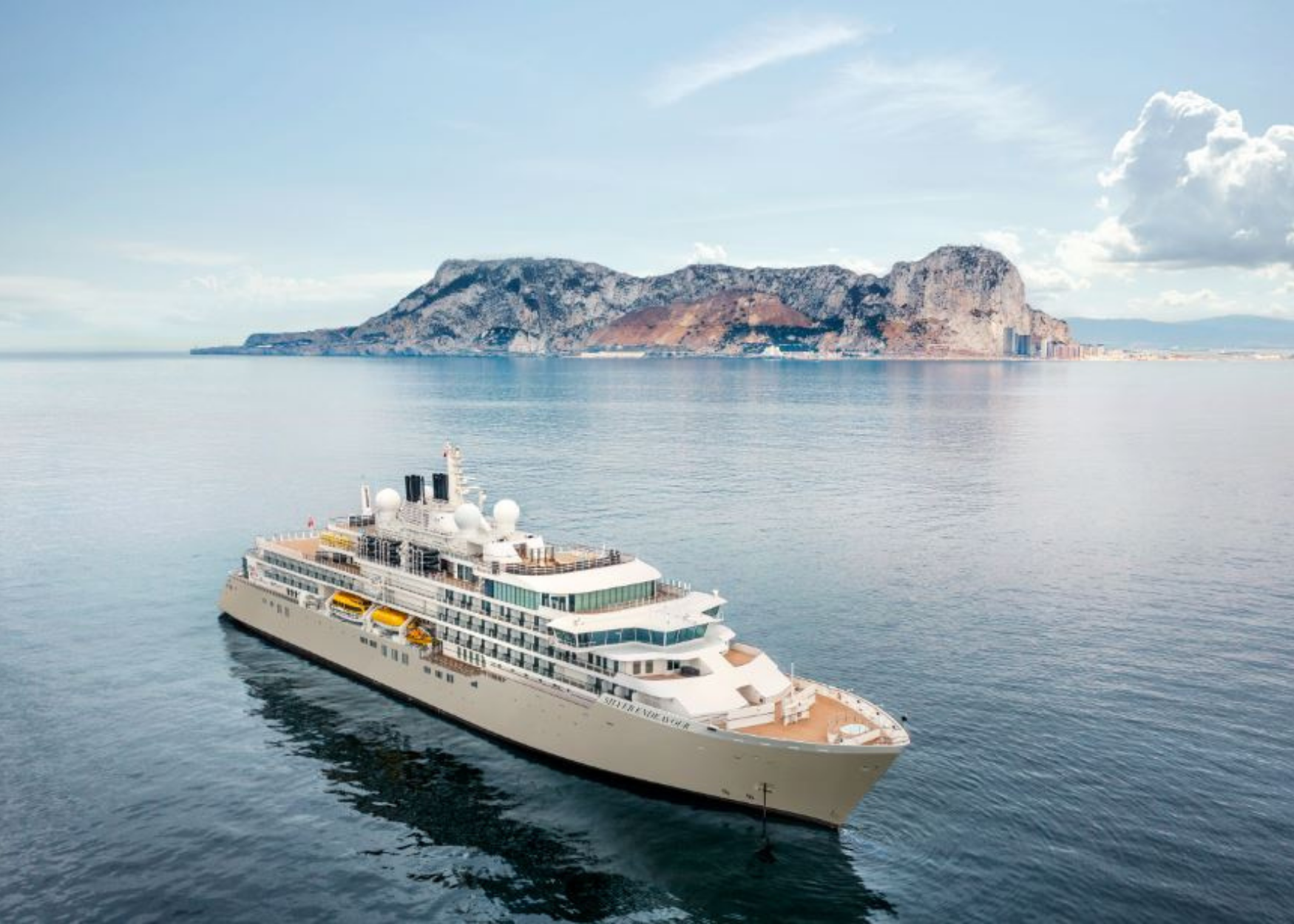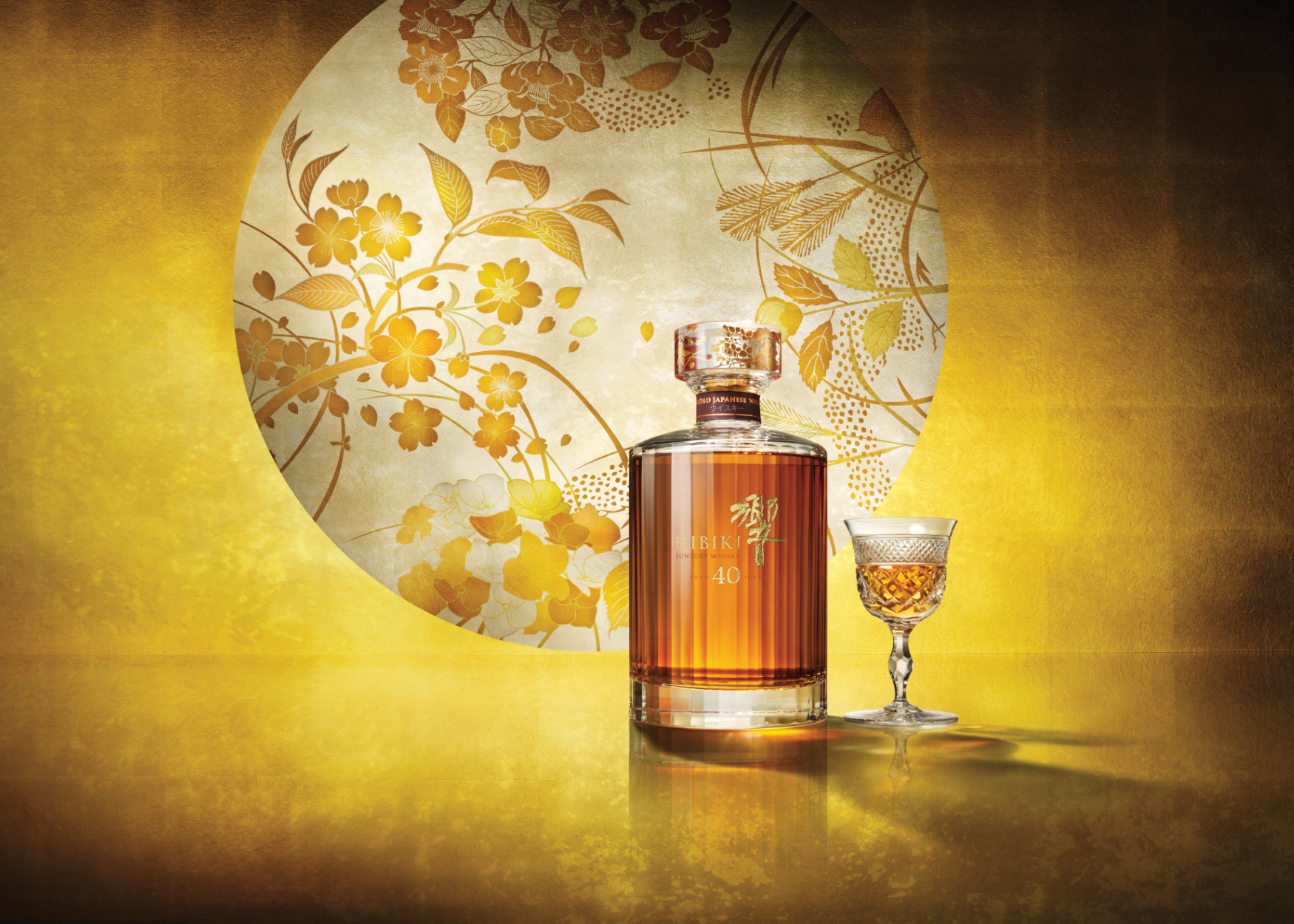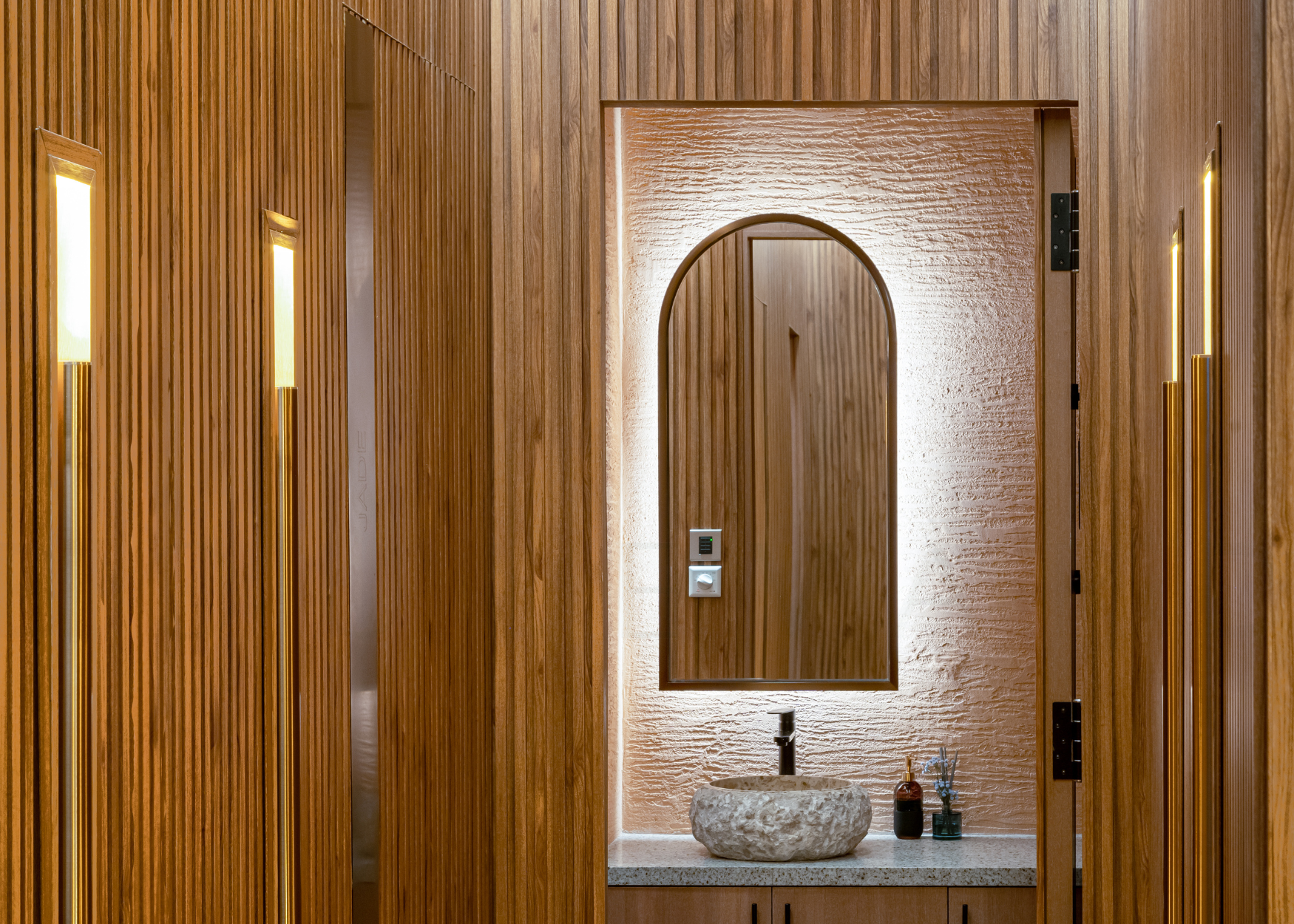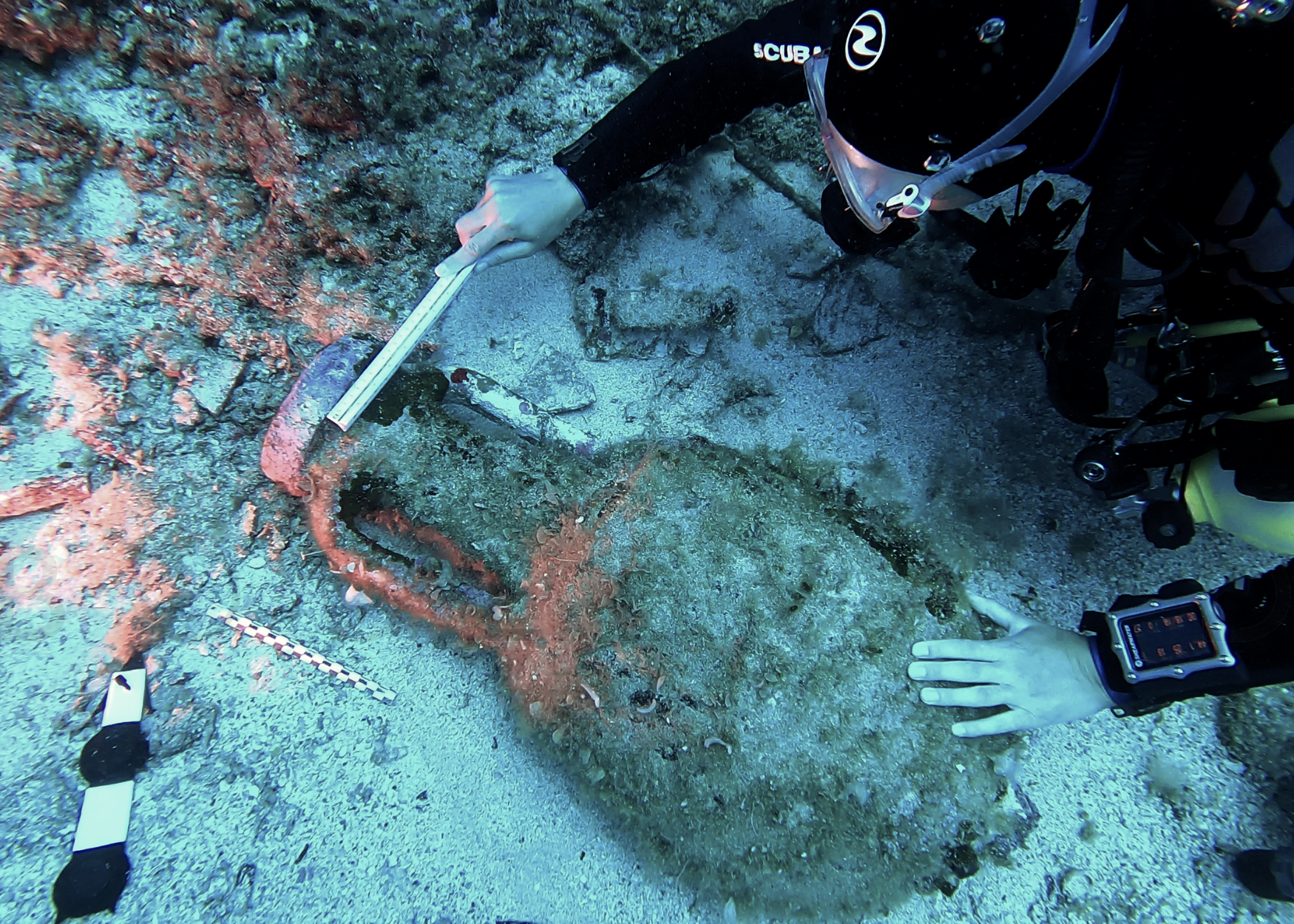
Culture | Travel
Tuck in to our exclusive shoots at the region’s top restaurants, interviews with celebrated chefs, and stunning hotel and resort tours from luxury destinations in Asia-Pacific and beyond…
— Featured in Boulevard Magazine —
Interview
The interview: Pommery’s Nathalie Vranken on how the brand honours its founder’s ethos “Never imitate anyone, including yourself”
Founded in 1836 in Reims, France, and shaped by Madame Jeanne-Alexandrine Louise Pommery after the death of her husband, Pommery secured its place in the world of cuvées with the creation of the first brut champagne in 1874—a dry style champagne distinguished by its freshness and vivacity. It was a true revolution for a wine that had, until then, been known for its exceptionally high level of sugar. Just over 150 years later, the Maison continues to honour its heritage while evolving its ethos, crafting champagnes that celebrate memories, experiences, and the joy of sharing.
The interview: Four Seasons Resort Chiang Mai’s Sean Mosher on crafting authentic experiences in Northern Thailand
With its terraced rice fields and forested mountains as a backdrop, Four Seasons Resort Chiang Mai offers a tranquil retreat in the Mae Rim Valley, just 30 minutes from the city centre. Opened in 1995 and brought under the Four Seasons flag in 2003, the property is designed in Lanna-inspired style, with curved teak ceilings, arched windows, and gold-leaf detailing on traditional shutters and doors. The 98-key resort is spread across pavilions, villas, and private residences, creating a sense of seclusion while still being deeply connected to its natural surroundings.
Interview
The interview: Cavaliere Giovanni Viterale on why now’s the right time for Singapore’s first villa-only resort, Raffles Sentosa Singapore
With 62 villas, each featuring its own private pool, Raffles Sentosa Singapore stands out among the city’s recent hotel openings, including Artyzen Singapore, The Edition, and The Standard.
Interview
The interview: Yohei Akao, founder of interior design firm Strickland, on his transformation of the Grand Hyatt Singapore
Strickland founder and designer director Yohei Akao talks us through his meticulous transformation of the Grand Hyatt Singapore, bringing together nature, city and brand heritage in the iconic Orchard hotel.
Interview
The interview: Mandala Club’s Ben Jones on how its partnership with luxury hospitality group ICON1C is elevating the private club experience
From Soho House to Annabel’s, the private club has become our generation’s idea of the third space—a place for connection, entertainment, and access. Singapore’s private club scene may be small, but it’s thriving. In a city this compact, clubs are under constant pressure to raise the bar, offering members exclusive events, curated experiences, and insider access to the best in dining, arts, and culture.
The invite-only Pacific Club Singapore offers a selection of rare and collectable whiskies
The Pacific Club Singapore, an invite-only private club, showcases a collection of rare and exceptional whiskies—many of which are open to expressions of interest.
Inside the by-invite-only Chairman’s Suite, the ultimate expression of Marina Bay Sands’ hotel redesign
Since its inception in 2010, Marina Bay Sands has quickly become an architectural marvel and the crown jewel of Singapore's skyline, thanks to its iconic structure—three 55-storey hotel towers linked by a 1.2-hectare sky park. Home to 1,850 rooms, including 775 suites, the development offers an extensive range of amenities that meet the expectations of today’s discerning guests—from award-winning restaurants and elevated wellness experiences to art installations and designer boutiques.
Event
Inside the global launch of Amaffi’s Royal White Diamond in New York
Legendary perfume house Amaffi hosted Boulevard at the brand’s global launch of their latest, enchanting fragrance, Royal White Diamond. Held in the maison’s flagship New York showroom—located, naturally, on the iconic billionaires’ row shopping Mecca of 57th Street—the event starred K-pop sensation and cultural force, Momo, who serves as Amaffi’s international ambassador and muse. “Perfume expresses itself by touching people’s hearts,” shared Momo. “It becomes a story that moves people when they smell it—it moves their emotions.”
— Latest Culture | Travel Features —
New release
The Macallan’s fourth edition of Distil Your World whisky pays tribute to Hong Kong
Shot on location at Violet Oon Singapore at Dempsey Hill.
Boulevard’s picks: A taste of rare and collectable whiskies
Rare whiskies go beyond age or price – they represent the pinnacle of craftsmanship, time and scarcity. These are not just spirits but stories in a bottle, shaped by decades of maturation, meticulous cask selection and the hands of master distillers dedicated to preserving tradition while pushing boundaries.
Interview
The interview: Sonu Shivdasani, co-founder of Soneva resorts, on buying into paradise
Pioneering hotelier and co-founder of Soneva, Sonu Shivdasani, launched the brand’s first resort with a view to having a residence in the Maldives. Now, many of his guests do too.
Interview
The Dictador 5 Decades collection is equal parts sculpture and spirit
When the great Richard Orlinski was asked to come up with a design for rum bottles that functioned as both rare spirits and fine art, the artist welcomed the challenge as a "fusion of two universes." And he couldn't have asked for a better partner in Dictador Rum.
Design tour
The art of memorable elegance: Armani Hotels in Milan and Dubai
There’s an enveloping scent of wood, light and alpine, with just an undertow of amber, that ushers you in and ultimately defines a stay at the Armani Hotels in Milan and Dubai. Devastatingly sophisticated, but at the same time, accessible. Supremely poised, and yet welcoming – a near-paradox the Armani maison somehow effortlessly extends to every touchpoint from design and service to amenities and gastronomy.
Inside the new era of luxury travel, where UHNW travellers are now trading authenticity over indulgence
From the sparkling city lights of Paris and the striking architecture of South Korea, to the sweeping landscapes along China’s Silk Road and the raw, close-to-nature encounters of a South African safari, travellers today are seeking destinations for their cultural depth and experience rather than their momentary popularity in social media.
New release
The House of Suntory’s new Hibiki Artist Collaboration is a celebration of Japanese art and whisky making
This year, the House of Suntory unveils a rare collaboration that bridges two of Japan’s most celebrated art forms—whisky and painting. In partnership with acclaimed artist Hiroshi Senju, the brand introduces limited-edition expressions of its iconic blended whiskies, Hibiki 21 Years Old Artist Collaboration and Hibiki 30 Years Old Artist Collaboration. To mark the launch, the House of Suntory will host an exclusive event on 20 November at Margaret, Neil Perry’s acclaimed Sydney restaurant.
Chef Alvin Leung’s next act: Reinventing fine dining at Singapore’s most exclusive club
“It’s three times as difficult,” says celebrity chef Alvin Leung, of the new restaurant he is conceptualising as the centrepiece of Vanta, touted as Singapore’s most ambitious private members’ club to date.
From rattan ceilings to reclaimed wood: Inside South Palms MGallery Panglao’s thoughtful design
On the 8th of August 2025, MGallery Collection opened its newest boutique resort in Bohol, the South Palms Resort and Spa. It was conceived through the collaboration of industry-leading designers, Patricia Ho Douven of White Jacket Singapore, Philip Pond of Atelier Pond and Patrick Keane of Enter Projects Asia, where they set out to design a resort that balances contemporary luxury with Boholano heritage, using local materials and craft as the foundation of the experience.
Interview
The interview: K. P. Ho, founder of Banyan Tree Group, on three decades of luxury hospitality
Banyan Tree Group founder K.P. Ho talks us through three decades of differentiated luxury hospitality, the bright future of branded residences, and crashing drones into his latest prestige developments.
A look at five luxury cruise experiences that redefine travel at sea
Whether navigating the fjords of Chile, anchoring off secluded Caribbean isles, or charting a course through polar waters, there are few vantage points more evocative than a luxury cruise designed to heighten the experience at every turn. These voyages offer a seamless blend of exploration and indulgence—bringing the comfort of a five-star hotel to the open seas.
Sullivans Cove unveiled its Winter Archive, presenting a rare opportunity to experience a rare selection of archival bottles
Tasmanian whisky distillery Sullivans Cove unveiled its Winter Archive—an intimate, museum-like showcase that invited guests to step inside the distillery’s private tasting room for a rare encounter with its history in a bottle.
The Ritz-Carlton Yacht Collection expands its world of ocean voyages with the Luminara
Since 2022, The Ritz-Carlton Yacht Collection has redefined luxury cruising, introducing its signature style of hospitality at sea with the launch of its inaugural yacht, Evrima. Measuring 624 feet and featuring 149 spacious suites, Evrima accommodates almost 300 guests, allowing for a quieter, more spacious onboard experience.
Macallan celebrates 200 years of milestones with the Time : Space Collection
The Macallan is celebrating its 200 years with two new expressions that pay homage to the craft of whisky making. With it comes the Time : Space Collection, which, as Master Whisky Maker Kirsteen Campbell says, is unique in the sense that it takes individuals into a journey through time. The distillery selected two whiskies that look at its storied past and would lay the foundation for future whisky makers and consumers alike.
A look at Molteni&C’s most celebrated hotel design collaborations
As an Italian heritage brand, Molteni&C's pursuit of exceptional design has led to some key collaborations with titans like Angelo Mangiarotti, Tito Agnoli and Luca Meda. The Italian furniture maker, after all, has always sought out creative partnerships that exercise its artisanal vision and legacy of craftsmanship.
North Sydney: The rise of a culinary hotspot
North Sydney, located just across the iconic Sydney Harbour Bridge from the CBD, has long been recognised as one of Australia’s largest commercial hubs. It served as a centre for business and finance, with a skyline dominated by corporate offices and high-rise buildings. The area also hosts one of the largest concentrations of advertising and information technology firms in New South Wales, solidifying its role as a key player in the region's economic landscape.
New release
The Apanage Brut 1874: A tribute to the 150th anniversary of Madame Pommery’s Brut
In 2024, Champagne Pommery celebrates the 150th anniversary of the Brut by Madame Pommery. This exceptional champagne is the first vintage of its kind, created in 1874 by cellar master Victor Lambert, and helped propel the French Maison's oenological success. Today, Champagne Pommery releases the Apanage Brut 1874 to commemorate this significant milestone.
New release
Remy Martin celebrates its legacy with the 300th Anniversary Coupe
Since its inception in 1724, the House of Remy Martin's cognacs have been a staple among the most important gatherings in France and the rest of the world. Its name has always been synonymous with prestige, world-class blends and an exceptional legacy that only a few cognac-makers have attained.
New release
Sullivans Cove unveils the 24-year-old single malt whisky from the final “lost cask”
Some years ago, Sullivans Cove discovered five casks from the distillery's earlier days in a remote area in Tasmania, which were considered lost to time. Four of these casks were released in 2020 as a 21-year-old vatted expression, leaving the final cask to mature longer.
The interview: Peter Ng, founder of Maduro, on music, whisky and cigars
After spending 15 years as a professional – and highly regarded – jazz pianist both in Singapore and on the international circuit, Peter Ng eventually started and settled down into his core property business in London. It was only when he found himself looking for somewhere to smoke a cigar that he conceived of, and then opened Robusto – the first incarnation of Maduro. The now beloved jazz, whisky and cigar club recently relocated to the Sofitel hotel in Sentosa, where Boulevard caught up with Ng over a Montecristo…
New release
The Macallan’s Harmony IV Collection is an exceptional fusion of artistry and flavour
The Macallan Harmony Collection debuted in 2021 as a special series of limited-edition spirits that re-use organic materials for its packaging. Blending art, design, and sustainability, the Speyside distiller releases its fourth edition in a unique collaboration with Cirque du Soleil, creating an entirely new level of sensory experience.
New release
Bruichladdich unveils its 15th Octomore series, including the second most heavily-peated spirit yet
Bruichladdich's Octomore, the distillery's annual collection of heavily-peated expressions, finally re-emerges with another triumvirate of 5-year-old single malt Scotch whiskies with the 15th Octomore series. This lineup includes the second most heavily-peated spirit in its category yet, following the 8.3 Octomore with a 309 phenol parts per million (PPM).
New release
Glenfiddich presents an exclusive 31-year-old whisky finished in a 9-year-old Bordeaux cask
Glenfiddich is known for its exceptional Grand Series collection that celebrates the combination between single malt and cultures from around the world. This includes the 29-year-old Grand Yozakura, the first single malt Scotch whisky finished in rare ex-Awamori casks, as well as the rare Palo Cortado Sherry cask-finished Gran Cortes.
The interview: Tetsuya Wakuda, acclaimed chef and owner of Tetsuya’s, on cultivating timeless taste
Today, like most Sydney suburbs within easy reach of the CBD and harbour, Rozelle has been thoroughly gentrified. Back in late ’80s, however, this inner-west enclave — considered since the early 20th Century to be one of the state’s most underprivileged, polluted areas — maintained a steely grip on its original unvarnished industrial character.
New release
The Macallan Time : Space Mastery pays tribute to past whisky makers
The Macallan celebrates its 200 years of legacy with an all-new expression that pays tribute to its past whisky makers. This is the Time : Space Mastery, a unique whisky made from the diverse inventory of the most exceptional oak casks.
Sullivans Cove unveils a rare 17-year-old second-fill whisky
As the second oldest whisky distillery in Tasmania, Sullivans Cove enjoys the distinction of producing some of the most complex single-cask expressions in the Australian market. Further adding to the award-winning distillery's exceptional portfolio is its rare 17-year-old American oak second-fill whisky release, the TD0107. With this blend, collectors enjoy a unique blend of herbal notes and a powerful dark and heavy finish.
New release
The Macallan A Night on Earth series: A tribute to the Spanish region of Jerez
Following the iconic release of the Time : Space Collection as part of The Macallan's 200th anniversary celebration, the distillery unveils the third release of the A Night on Earth Series to mark the conclusion of the bicentennial festivities.
Interview
The interview: Sarah Crowe, winemaker and general manager of Yarra Yering, on honouring heritage and embracing winemaking innovations
Yarra Yering is one the oldest vineyards in Victoria's Yarra Valley, but is also one of the youngest in the region to hold a Langtons Classification. Heralding a legacy of more than five decades, the brand's winemaker and general manager Sarah Crowe talks us through its heritage, evolving practices and how the Langtons Classification have enhanced their reputation in the winemaking industry.
Gardens of Eden: Into Phuket’s new luxury tropical arcadia
As the Phuket property market transforms into one of the most robust in the region, it welcomes its latest luxury wellness residential and hospitality community along beautiful Bang Tao Beach. Gardens of Eden reflects Thailand's tropical splendor in many ways. With it comes a breezy arcadia of grand proportions.
The interview: Suphajee Suthumpun, CEO of Dusit International, on the launch of their flagship Bangkok hotel and residences
A first look at the flagship branded residences by Dusit International, which will redefine the hotel group’s landmark site in the heart of Bangkok.
Interview
The interview: Thomas Duroux, CEO, Château Palmer
Producing and marketing fine wine requires a particular set of skills, blending science and agriculture, sober business savvy and Dionysian artistry. It follows that it takes certain special qualities to be the CEO of a winemaker – especially a winemaker as esteemed as Château Palmer.
Interview
Capella Sydney’s McRae Bar and Brasserie 1930
When Capella opened its doors in Sydney’s heritage sandstone precinct, it was never going to be just about the city-resort hotel. F&B play a leading role in the luxury group’s establishments, as witnessed by the launch, earlier this year, of McRae Bar and Brasserie 1930.
Jason Ong’s restaurants Caviar and Uni Gallery emphasise doing what you love
Restaurateur and gourmet seafood importer Jason Ong has a straight-forward approach to both businesses – do what you love. His two restaurants, Caviar and Uni Gallery, underscore the point. “I love eating uni on its own,” he says, “with a spoon, like ice-cream.” Tonight, however, it’s a pairing of five courses of caviar with matching Champagne by Legras & Haas, whose vigneron Jerome Legras aims “to elicit every nuance Champagne can offer.” This runs the gamut from the crisp and citrusy Blanc de Blancs paired with a creamy Kaluga Queen caviar and Hyogo oyster, through to the Rosé, with its structured breadth of red fruits, setting off sake lees, white chocolate and the enveloping and buttery Polanco Oscietra.
Interview
67 Pall Mall: The exclusive members’ club with a wine problem
Singapore’s sublime new members’ club began in London, when founder and former banker Grant Ashton found himself with a wine problem. The dilemma was an overabundance of fine wines in his collection – and a desire to share it.
Showcase
History repeating: The Fullerton Hotel Sydney is a heritage stay with a story
The parallels could not be more perfect. Just like its stunning sister in Singapore, The Fullerton Hotel Sydney was once a grand General Post Office and remains a beloved local icon, with layers of history to unfold. Launched in 1874, the GPO Building has long been a landmark and meeting spot; its clock tower was once the tallest building in the city – and while Sydney’s skyline has since surpassed it, the allure of this place endures.
Showcase
Ice queen: Silversea unveils expedition ship Silver Endeavour
Cruising is synonymous with fun in the sun, lazy days drifting around tropical isles. Yet the more adventurous cruise aficionado will probably have advanced beyond such quotidian travels. Instead, they’ll seek journeys offering truly extraordinary experiences. Trips that are not simply vacations – they’re full-blown expeditions. For those intrepid voyagers looking to go somewhere awe-inspiring, but unwilling to sacrifice creature comforts along the way, Silversea has long been the go-to cruise line. Specialising in ultra-luxury aquatic journeys to remarkable locations, the company recently launched its most sumptuously appointed expedition ship yet, the Silver Endeavour.
Interview
New horizons for renowned Nihi Resorts
The past few years have been difficult for the hospitality industry, to say the least. But for the proprietors of Nihi, an ultra-luxury surf resort on the Indonesian island of Sumba, one hour’s flight east of Bali, there’s been a silver lining to the restrictions on international travel.
Interview
The interview: Esin Güral Argat, CEO of Joali
Esin Güral Argat is the vice-president of the board at the Gürok Group, the Turkish conglomerate founded in 1948 and run by her family ever since. The company has interests in packaging, real estate, mining, roof tiles and construction, among other concerns. Entering the family business in the 1990s, Güral Argat quickly seized the initiative to build a start-up of her own within the company, LAV. Today, it’s the world’s fifth-largest glassware manufacturer, producing some two million drinking receptacles per day, while employing more than 2,000 people at its offices and factories.
New release
The House of Suntory unveils its oldest blended whisky yet
This year, the House of Suntory introduces its oldest blended whisky yet, the Hibiki 40 Year Old. This expression is set to be launched at Oncore by Clare Smyth in Crown Sydney on 24th October. This exclusive gathering offers guests the opportunity to be part of the first tasting of the Hibiki 40 Year Old in Australia. Individuals are also invited to experience the bespoke five-course menu designed by Chef Clare Smyth at the Michelin-starred restaurant.
Showcase
33 Club: Design, drinks, dinner meet a private members’ watch club
The world’s sixth-largest importer of Swiss watches, Singapore is a voracious consumer of luxury timepieces. So it makes sense that the city-state should possess somewhere suitably sophisticated for the watch-collecting community to congregate. Enter 33 Club, a plush new private member’s establishment that opened late last year at Raffles Place.
Explore the hidden intricacies of the Great Barrier Reef like never before
As the holiday season commences around the world, there’s no better place to escape the daily rush than Australia’s breathtaking Great Barrier Reef during the pristine summer season.
Interview
The interview: Tamara Grischy, general manager of Langtons, on the globalisation of Australian fine wine
For more than three decades, Langtons Classification has served as the ultimate form guide for connoisseurs. It has found, recorded and predicted how demand, preferences and wine styles have ebbed and flowed over the years, as well as the emerging influence of Australian fine wines globally.
Hublot Xplorations sets its sights on unraveling the history of the Antikythera shipwreck
If there's one thing Hublot has always understood, it's the beauty that lies in heritage. Since the Maison's launch in 1980, it has continued to push the boundaries of Swiss watchmaking and what a modern timepiece could be. This, of course, started off with the introduction of polished and brushed gold and rubber into haute horology, presenting new ways of defining style and adaptability.
The Macallan embarks on a ‘journey through time’ with Cirque du Soleil for its 200th anniversary
In the world of fine whisky, The Macallan has stood consistently as a true innovator of the single malt Scotch whisky. For two centuries, the distillery's expressions have showcased the flavours and texture of the picturesque Speyside region. Collaborations with artists and designers over the years have only enhanced the brand's status.
Bruichladdich embraces its Islay legacy with two new rare single malt expressions
Bruichladdich had been built on the stories that shaped the remote Isle of Islay. The Scottish distillery honors its heritage all the while embracing modern techniques to create more dynamic expressions.
300 years of Rémy Martin: The legendary 1738 Accord Royal comes to Sydney
The House of Rémy Martin is a name synonymous with prestige, world-class blends and an enduring power only a fortunate few have attained. For about three centuries, its cognacs have been a staple among the most important gatherings in France and the rest of the world.
Sullivans Cove introduces Australia’s oldest single cask whisky to the market
Sullivans Cove adds another layer to its legacy with the release of its 24-year-old single cask spirit. The award-winning Tasmanian distillery recently announced the limited run of the HH0004. With it comes an expression that not only surpasses the brand's 22-year-old record-breaking blend, but also exudes newer levels of depth and complexity in flavor.
Firangi Superstar: the restaurant that reveals itself in vignettes
Cinematic, seductive and quasi-surreal, Firangi Superstar announces itself as a “foreigner’s love letter to India.” Aesthetes with an eye for eccentricity might wonder if that foreigner is American francophile filmmaker Wes Anderson, the great creator of dreamlike worlds. But the applause here goes to restaurateurs Rohit Roopchand and Michael Goodman of the Dandy Collection, with creative director and principal of EDG, Piya Thamchariyawat, mastering the mise-en-scène.
